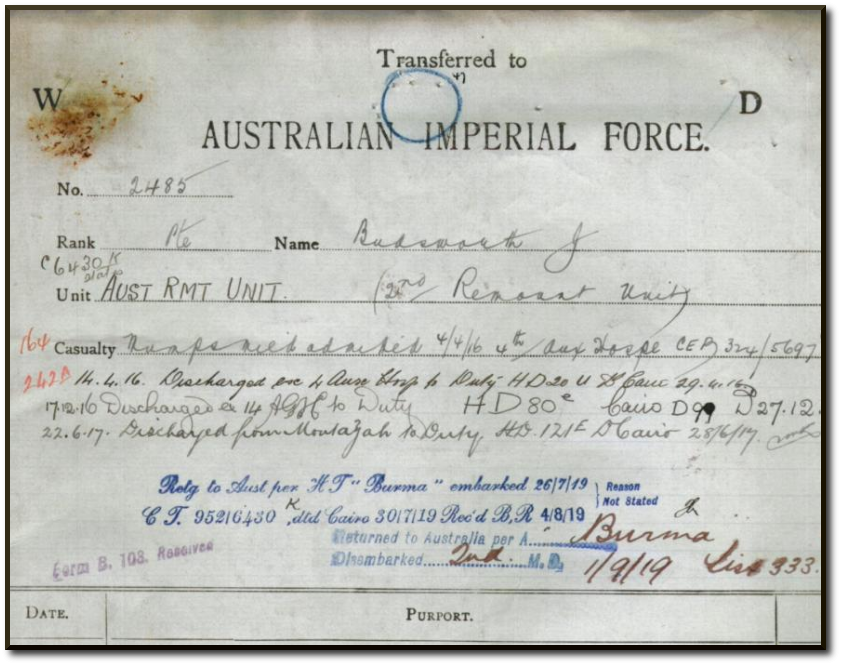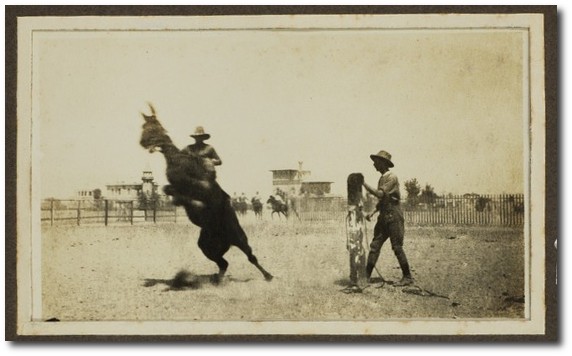
James Budsworth, Service Record, National Archives of Australia
Indigenous Australian, James Budsworth, 8th Squadron, 2nd Australian Remount Unit
James Henry Budsworth, was born in Narrabri, NSW in 1874 to James Budsworth and Catherine Ryan. He was working as a ploughman for Jondaryan Station, in Queensland when he enlisted in Brisbane, in November 1915. Assigned to the 2nd Australian Remount Unit, he was in the company of several well known Queensland horsemen including, Harry Hawkins, Charles Phillott, and James Hubbard, and sailed for the Middle East a very short time after.
Budsworth was hospitalised with mumps shortly after his arrival in Egypt, but rejoined his unit two weeks later. Although never in the front lines, the Remount units were the back bone of the mounted infantry, breaking in, caring for, and supplying regiments with the mounts they were renowned for.

Australian Remount Unit breaking in horses in Egypt. 30731 John Joseph McGrath photographs and correspondence. (State Library of Queensland collection)
Budsworth developed an ulcer on his right leg in November 1916 for which he was treated in Abbassia and later in May 1917 he injured the same leg and was hospitalised in Cairo.
James Budsworth was transferred to the Field Remount Unit, operating from Ludd, Palestine in March 1918 where he continued to serve until his return to Australia in September 1919. He resumed his work as a station hand working on several properties around Queensland - Dungowan Station, south of Augathella and Allandale near Morven. James Budsworth died in 1937 age 61.
Read more ...
- Service record: BUDSWORTH, James
- Embarkation roll: 8th Squadron, 2nd Remount Unit
- Unit Diaries: 2nd Australian Remount Unit
- J.L. Kohen, Daruganora: Darug Country - The place and the people, Darug Tribal Aboriginal Corporation, Blacktown, 2006, p.63
- One of the soldiers featured in SLQ’s HistoryPin Collection
- Queensland’s Indigenous Servicemen [mp4]
The information in this blog post has been researched by State Library staff and volunteers, it is based on available information at this time. If you have more information that you would like to share or further research uncovers new findings, this post will be updated.
Comments
Your email address will not be published.
We welcome relevant, respectful comments.